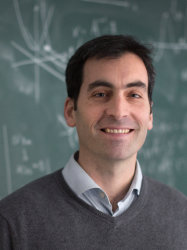BibTex format
@article{Gudmundsson:2015:10.1016/j.cryogenics.2015.09.002,
author = {Gudmundsson, JE and Ade, PAR and Amiri, M and Benton, SJ and Bock, JJ and Bond, JR and Bryan, SA and Chiang, HC and Contaldi, CR and Crill, BP and Doré, O and Filippini, JP and Fraisse, AA and Gambrel, A and Gandilo, NN and Hasselfield, M and Halpern, M and Hilton, GC and Holmes, W and Hristov, VV and Irwin, KD and Jones, WC and Kermish, Z and MacTavish, CJ and Mason, PV and Megerian, K and Moncelsi, L and Montroy, TE and Morford, TA and Nagy, JM and Netterfield, CB and Rahlin, AS and Reintsema, CD and Ruhl, JE and Runyan, MC and Shariff, JA and Soler, JD and Trangsrud, A and Tucker, C and Tucker, RS and Turner, AD and Wiebe, DV and Young, E},
doi = {10.1016/j.cryogenics.2015.09.002},
journal = {Cryogenics},
pages = {65--76},
title = {The thermal design, characterization, and performance of the Spider long-duration balloon cryostat},
url = {http://dx.doi.org/10.1016/j.cryogenics.2015.09.002},
volume = {72},
year = {2015}
}

